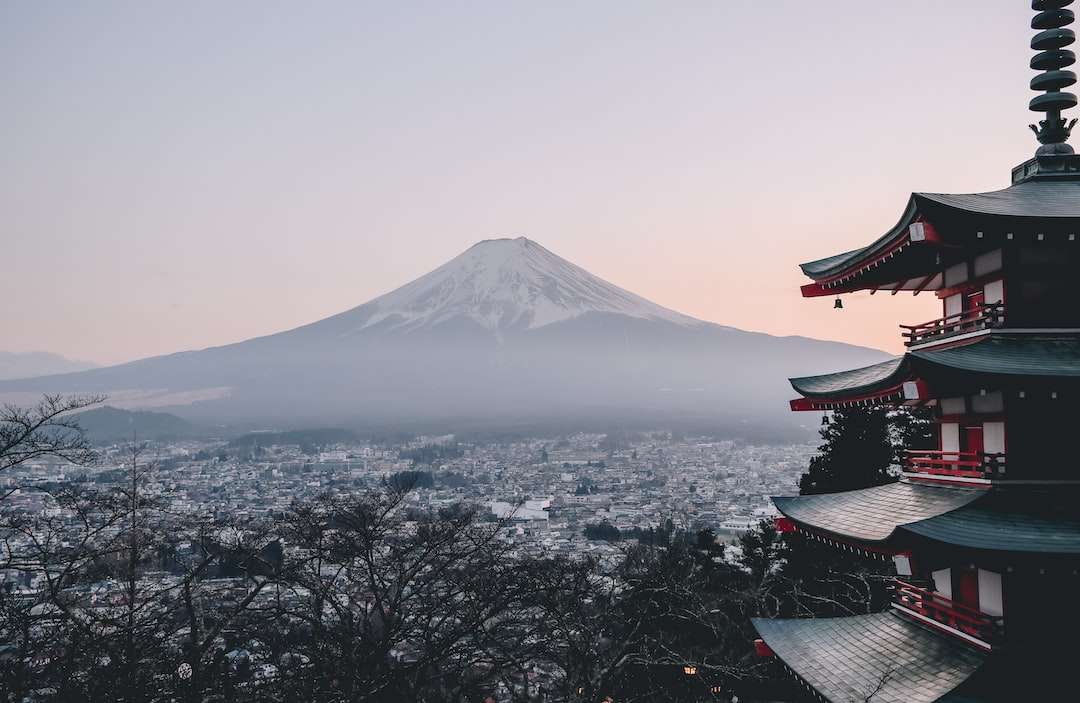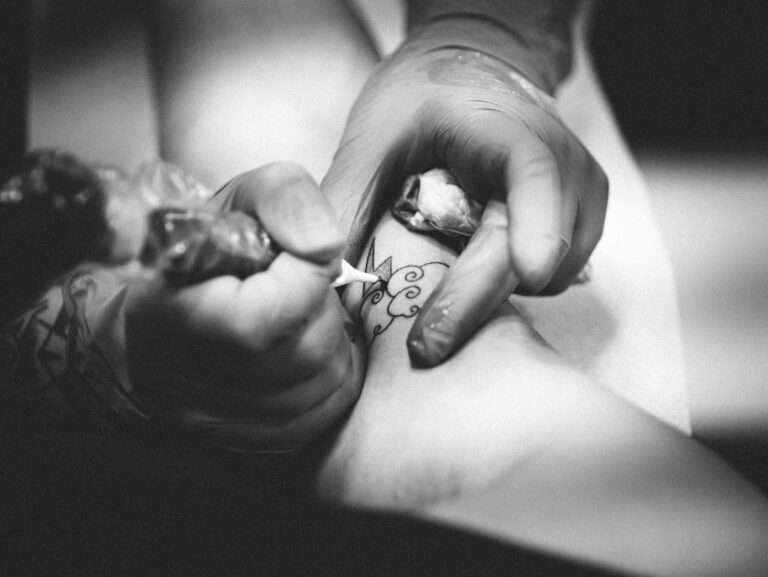Japanese Tattoos: A Guide to Symbolism and Significance

Japanese tattoos have a rich history and cultural significance that dates back centuries. In Japanese culture, tattoos were initially stigmatized and associated with criminal activity. However, over time, they have evolved into a form of artistic expression and have gained popularity not only in Japan but also in Western culture. This article will delve into the history of Japanese tattooing, explore traditional motifs and their meanings, discuss the role of nature and mythological creatures in Japanese tattoo symbolism, examine different styles of Japanese tattooing, and highlight the spiritual significance of these tattoos. Additionally, we will explore the modern evolution of Japanese tattooing and discuss the importance of cultural respect and responsible tattooing practices.
The History of Japanese Tattooing: From Stigmatization to Artistic Expression
The history of Japanese tattooing can be traced back to the Jomon period (10,000 BCE – 300 BCE), where evidence of tattooed figurines has been found. However, it was during the Edo period (1603-1868) that tattoos became associated with criminality. Criminals were often marked with tattoos as a form of punishment and identification. This association led to a negative perception of tattoos in Japanese society.
During the Meiji period (1868-1912), Japan underwent a period of modernization and Westernization. As a result, tattoos were further stigmatized as they were seen as a symbol of Japan’s traditional past. However, during this time, some artists began to view tattoos as a form of artistic expression rather than a mark of criminality.
It was not until the late 20th century that tattoos started to gain acceptance in Japanese society. Today, Japanese tattoos are celebrated for their intricate designs and cultural significance. They have become a popular form of self-expression not only in Japan but also in Western culture.
Traditional Japanese Tattoo Motifs and Their Meanings
Traditional Japanese tattoos are known for their distinct motifs, each with its own unique meaning. Some popular motifs include dragons, koi fish, cherry blossoms, geisha, samurai, and phoenixes.
Dragons are a common motif in Japanese tattooing and symbolize strength, wisdom, and protection. Koi fish represent perseverance and determination as they swim upstream against strong currents. Cherry blossoms are a symbol of beauty and the transient nature of life. Geisha tattoos often represent femininity, grace, and elegance. Samurai tattoos are associated with honor, loyalty, and bravery. Phoenixes symbolize rebirth and transformation.
These motifs are often combined to create larger, more complex designs that tell a story or convey a specific message. The meanings behind these motifs can vary depending on the individual and the context in which they are used.
The Role of Nature in Japanese Tattoo Symbolism
Nature plays a significant role in Japanese tattoo symbolism. The Japanese have a deep appreciation for the natural world and its beauty, which is reflected in their tattoo designs.
Elements of nature such as cherry blossoms, waves, mountains, and animals are commonly used in Japanese tattoo designs. Cherry blossoms represent the transient nature of life and are often associated with beauty and renewal. Waves symbolize strength, power, and the ebb and flow of life. Mountains represent stability, strength, and endurance. Animals such as tigers, snakes, and birds are also frequently depicted in Japanese tattoos and carry their own symbolic meanings.
The use of nature in Japanese tattoo designs allows individuals to connect with the natural world and express their appreciation for its beauty and significance in their lives.
The Significance of Mythological Creatures in Japanese Tattooing
Mythological creatures play a prominent role in Japanese tattooing and hold deep symbolic meanings. Some popular mythological creatures include dragons, phoenixes, kirin (a mythical creature resembling a deer with scales), and kitsune (a fox spirit).
Dragons are often depicted as powerful and wise creatures that symbolize strength, protection, and good fortune. Phoenixes represent rebirth, transformation, and immortality. Kirin are associated with good luck, prosperity, and protection. Kitsune are often seen as mischievous but also possess wisdom and magical abilities.
These mythological creatures are not only visually striking but also carry deep cultural and spiritual significance in Japanese tattooing.
Understanding the Different Styles of Japanese Tattooing

Japanese tattooing is known for its distinct styles, each with its own unique characteristics. Some popular styles include Irezumi, Horimono, and Tebori.
Irezumi is the traditional style of Japanese tattooing and is characterized by its use of bold lines, vibrant colors, and intricate designs. It often features traditional motifs such as dragons, koi fish, and cherry blossoms.
Horimono is a more elaborate style that covers large areas of the body. It is typically done using traditional hand tools and is known for its intricate details and shading techniques.
Tebori is a traditional Japanese tattooing technique that involves hand-poking the ink into the skin using a series of needles attached to a wooden handle. This technique allows for greater control and precision in creating intricate designs.
Each style has its own unique aesthetic and techniques, but they all share a common thread of honoring the rich history and cultural significance of Japanese tattooing.
The Importance of Placement and Size in Japanese Tattoo Design
In Japanese tattooing, the placement and size of a tattoo can greatly impact its meaning and visual impact. The body is seen as a canvas, and each area has its own significance.
For example, tattoos on the back are often associated with strength and protection, while tattoos on the chest represent courage and bravery. Tattoos on the arms can symbolize power and strength, while tattoos on the legs are often associated with perseverance and determination.
The size of a tattoo can also affect its meaning. Larger tattoos are often seen as more significant and may represent a deeper connection to the symbolism behind the design. Smaller tattoos, on the other hand, can be more discreet and personal.
By carefully considering the placement and size of a tattoo, individuals can enhance its meaning and create a visually striking design.
The Spiritual Significance of Japanese Tattoos
Japanese tattoos have a deep spiritual significance and can be used for various spiritual purposes. In traditional Japanese culture, tattoos were believed to have protective qualities and were used to ward off evil spirits.
Today, many individuals choose to get Japanese tattoos as a way to connect with their spirituality or honor their ancestors. These tattoos can serve as a reminder of one’s values, beliefs, and personal journey.
Symbols such as dragons, phoenixes, and lotus flowers are often used in spiritual tattoo designs. These symbols represent strength, transformation, and enlightenment.
Japanese tattoos can be a powerful tool for self-reflection, personal growth, and spiritual connection.
The Modern Evolution of Japanese Tattooing
Japanese tattooing has evolved significantly over time, thanks to advancements in technology and changing societal attitudes. Modern techniques such as electric tattoo machines have made the process faster and more precise.
Contemporary Japanese tattoo artists have also embraced new styles and techniques while still honoring traditional motifs and symbolism. Some artists incorporate elements of realism or abstract art into their designs, creating a fusion of traditional and modern aesthetics.
Additionally, the popularity of Japanese tattoos in Western culture has led to a cross-pollination of styles and ideas. Western tattoo artists have been inspired by Japanese tattooing techniques and motifs, creating their own interpretations of this art form.
Navigating Cultural Appropriation and Respectful Tattooing Practices
As with any form of cultural expression, it is important to approach Japanese tattooing with cultural respect and sensitivity. Cultural appropriation occurs when elements of a culture are taken out of context or used without proper understanding or respect.
To navigate cultural appropriation in Japanese tattooing, it is essential to educate oneself about the cultural significance and history behind these tattoos. This includes understanding the meanings behind traditional motifs, respecting the cultural practices associated with tattooing, and seeking out artists who have a deep understanding of Japanese tattooing traditions.
Respectful tattooing practices also involve engaging in open and honest conversations with tattoo artists about the design, placement, and meaning of the tattoo. It is important to approach the process with an open mind and a willingness to learn and appreciate the cultural significance of Japanese tattoos.
Conclusion
Japanese tattoos have a rich history and cultural significance that spans centuries. From their stigmatization in Japan to their rise as a form of artistic expression, Japanese tattoos have evolved and gained popularity in Western culture. Traditional motifs, nature symbolism, mythological creatures, different styles, placement and size, spiritual significance, and modern evolution all contribute to the cultural significance of Japanese tattoos. Navigating cultural appropriation and practicing respectful tattooing are essential in honoring this art form. By understanding the cultural significance of Japanese tattoos and approaching them with respect, individuals can appreciate and celebrate this ancient art form while avoiding cultural appropriation.
If you’re interested in exploring the fascinating world of symbolism, you may also enjoy reading about Japanese Tattoo Meanings. Tattoos have long been an important part of Japanese culture, with each design holding deep symbolic significance. From dragons representing strength and wisdom to cherry blossoms symbolizing beauty and the transient nature of life, these tattoos are rich in meaning. To delve further into the symbolism behind Japanese tattoos, check out this insightful article: Japanese Tattoo Meanings.
FAQs
What are Japanese tattoos?
Japanese tattoos are traditional body art designs that originated in Japan. They are known for their intricate details and bold colors.
What do Japanese tattoos symbolize?
Japanese tattoos are rich in symbolism and can represent a variety of things such as strength, courage, loyalty, and honor. They can also depict mythical creatures, deities, and natural elements.
What is the history of Japanese tattoos?
Japanese tattoos have a long history dating back to the Jomon period (10,000 BCE – 300 BCE). They were initially used for spiritual and decorative purposes and were later adopted by the Yakuza, a Japanese organized crime syndicate, as a symbol of their identity and loyalty.
What are some popular Japanese tattoo designs?
Some popular Japanese tattoo designs include koi fish, dragons, cherry blossoms, samurai, geishas, and kanji characters.
What is the process of getting a Japanese tattoo?
Getting a Japanese tattoo involves finding a skilled tattoo artist who specializes in Japanese designs. The process can take several hours or even multiple sessions depending on the size and complexity of the design.
Are Japanese tattoos painful?
Yes, Japanese tattoos can be painful as they involve the use of needles to inject ink into the skin. The level of pain can vary depending on the individual’s pain tolerance and the location of the tattoo.
What are some precautions to take before getting a Japanese tattoo?
Before getting a Japanese tattoo, it is important to research the design and its meaning to ensure it aligns with your values and beliefs. It is also important to choose a reputable tattoo artist and to follow proper aftercare instructions to prevent infection and promote healing.





